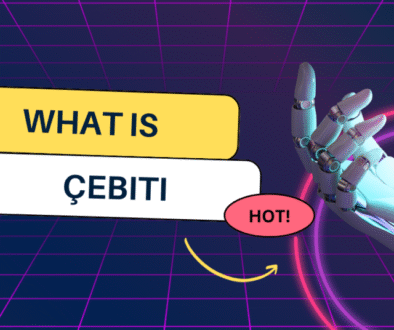How to Become a Professional 3D Animation Artist
If you want to become a professional 3D animation artist, you must have a clear understanding of the different techniques and processes involved in the production of a film. The techniques include character design, lighting, camera angles, compositing, and more. The production process is very involved, and it requires a lot of patience and dedication. The more you know about the process, the easier it will be to create a high-quality film.
Compositing
Compositing involves creating a new image from two or more existing ones. It can be as simple as matching two layers or as complex as matching hundreds of them. It is one of the most important steps in creating a finished animation. It also allows you to add specific 2D visual effects to your animation.
The process of compositing 3D animations begins with a concept and storyboard. Once the idea is developed, the artist can begin creating the models. Once they are ready, they can begin rendering the final video. Usually, this step involves preparing the video with layers. Once all the layers are completed, the final video will be ready for viewing.
Compositors are responsible for ensuring the consistency of visual elements in the finished animation. This includes working with a variety of 3D software images and merging them into a single product. A compositor has to have a high level of technical expertise and be able to work with diverse files. With these skills, they can make shots appear more seamless.
Compositing is an integral part of animation production, and mastering it will help you create professional 3D animations. Motion graphics artist Roberto Puig has over fifteen years of experience, and has worked with companies such as Discovery Networks, Cbeebies, and CBC Sports. He is also a teacher and teaches Adobe After Effects.
Character design
If you’re considering a career in character design for professional 3D animation services, you need to prepare yourself for a variety of tasks. First, you need to gain a solid understanding of human and animal anatomy. You should also familiarize yourself with different art styles and methods. Also, take time to study the medium and techniques used for 2D animation. After that, you need to collaborate with storyboard artists and directors.
There are many programs available for creating characters. Some are better for cinematographic work and others for rendering. Using the right software will allow you to easily create realistic characters. Some programs also allow you to customize 3D materials. They also help you streamline your work and allow you to work more efficiently.
Character design for 3D animation is an increasingly important part of video games. The right design can help connect the audience with the story. Proper proportions, color and silhouette are crucial for creating a realistic, expressive character. The course teaches students how to apply these principles and learn how to develop a pipeline to create expressive characters. It also teaches them how to create 3D digital models of their characters.
Lighting
There are many aspects to consider when lighting a scene in professional 3D animation. First, decide on what kind of light source the scene needs. This could be the sun, a street lamp, or some other type of lighting. The way you light your scene will determine how the player or character experiences the environment.
Professional 3D animations often use lighting to convey location and mood. For instance, lighting can be used to indicate whether a scene is set on a sunny day or in the depths of a dark and sinister setting. It is also used extensively in 3D advertising, commercials, and product visualizations. Like lighting used on live-action sets, 3D animation lighting creates tints, reflections, and shadows. While the principles behind lighting are similar to those in live-action productions, lighting artists in animation are given more creative freedom.
Professional 3D lighting is much more complex than simply placing a light source. In fact, there are several well-established paradigms for lighting 3D scenes. Depending on the scene type, each paradigm will have a slightly different approach. For example, interior lighting will make sense for scenes that take place in a studio, while character-based lighting is a good choice for exterior scenes.
Camera angles
There are two ways to change camera angles in professional 3D animation. One way is to drag and drop the camera position in the scene. Another is to click on the Camera icon in the left pane, next to the gesture and walk icons. Both methods will change the camera position. After you have adjusted the camera position, you can change the scene’s look by changing the camera angle slider.
The Upside Down camera angle shows the subject upside-down. The film director Juan Diego Solanas has used this technique in the hit movie, Upside Down. Another movie that used this technique was Mission Impossible 2, which features a scene in which Spider-Man descends a ladder to shoot a goon. Aside from movies, this style is used in professional 3D animation. It makes for a more dramatic scene.
Among the most common camera angles in professional 3D animation is the Over-The-Shoulder shot. This is achieved by placing the camera behind one actor and revealing the shoulder and face of the other actor. This angle is often used to depict a conflict between two characters. Using this style, viewers can see the conflict between the characters and their relationship.
Pre-designed assets
Pre-designed assets are an excellent tool for creating 3D animations. Instead of manually creating all the models and animations, artists can buy pre-designed assets and modify them to create a unique style. Some of these assets can be purchased for a low price or even free of charge.
3Delicious is a marketplace that features high-quality assets and resources. Its wide range of products covers everything from low poly meshes to professional animations. Many of the assets are pre-made with keyframe animations and mocap data. You can purchase individual assets or whole bundles for as little as $10.
Portfolio
A good 3D animation portfolio should contain relevant examples of the artist’s work. Examples can be of character design, storyboarding, rigging, and animation. Some good examples of art portfolios include those by Mathias Takacs, who is an animator and 3D generalist.
An animation portfolio can be a great tool for advertising your work. It shows potential clients your past work and helps convince them to hire you. This is also a great way to demonstrate your true abilities and skills. A good animation portfolio is just as important as a degree in a professional field.
A good portfolio should be available online. It should contain observational drawings and personal work, as well as an introduction video. It should also include one image per slide. It should not be combined into one PDF document and images should be separated by captions. In addition to the image or video content, it can also include music and other documents.
A good portfolio should have a showreel (also known as a demo reel) and a website that showcases your work. A showreel can be uploaded to Youtube and Vimeo and will highlight your skills and personality.
Cost
Creating a successful 3D animation project is a complex process, requiring several teams of experts and hours of work. In addition to the 3D modeling and animation work, the process requires scripting and storyboarding. It is also important to consider that certain elements can be created at different stages and cannot be done at the same time.
Costs vary depending on the style, complexity, and other production requirements. Hourly rates can also depend on the experience, qualifications, and educational background of the 3D animator. The more experience the artist has, the more the price will go up. Depending on the project, it can cost as much as twenty-five thousand dollars.
Aside from the amount per minute, the duration of the animation will also determine the cost. Most animation is priced per second, so the longer the animation, the higher the cost. In addition, a tight deadline will increase the cost. Animation studios include revision fees into the total cost, so if you want any changes made during the process, you should be prepared to pay for them.
Costs for a 3D animation project will vary, depending on the complexity of the project and the complexity of the characters. Longer animations typically require more technical expertise and longer render time. Some animation studios will charge a different rate for different parts of the project.


